| By Thomas Brett |
Introduction To The Series:
Learning How To Learn is one of the most crucial steps you can take towards becoming great at pretty much anything – And what better place to learn than from the minds of people who have actually been doing the job successfully for years?
In this ongoing series of Blogs, we’ll explore the valuable words of wisdom bestowed upon us by some of the most sought after names in the recording studio business, and discover how you can apply this advice to your own situation.
This week, we’re delving into the wonderful world of chart-topping, genre-skipping, loudness-crushing “Beard Wizard”: Andrew Scheps
NOTE: If you’re hoping to find some “secret mix settings” or “magic formulas” in this article then you might as well leave now… I can guarantee you that the real secrets behind each of these engineers’ success are their ears and personal tastes.
Remember:
Following the practical “workflow and decision-making” advice these guys have to offer from years of experience in the business is far more valuable than trying to copy the settings they’ve used for specific songs!
VOLUME 4: Andrew Scheps
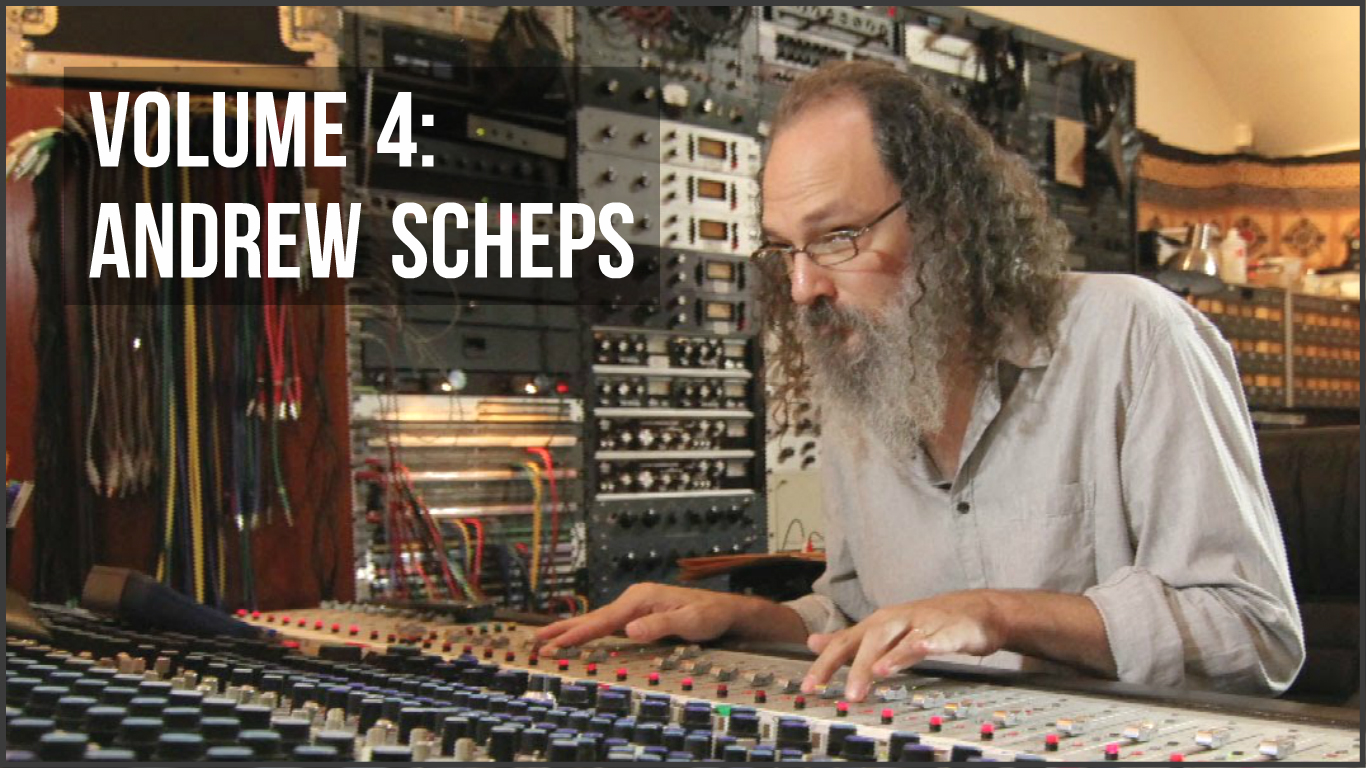
Who Is Andrew Scheps?
Andrew Scheps is a Multiple-Grammy-Award-Winning Engineer & Producer who’s worked with some of the biggest names in pretty much every genre imaginable.
Some of the select artists he’s worked with include:
Black Sabbath
Red Hot Chili Peppers
Adele
Audioslave
Green Day
Jay-Z
Metallica
Lana Del Rey
AND MANY MORE…
Now that you know exactly who you’re dealing with, let’s cut straight to the chase…
Here Are 5 Pieces Of Incredible Audio Advice From Andrew Scheps:
1 – Analog vs. In The Box
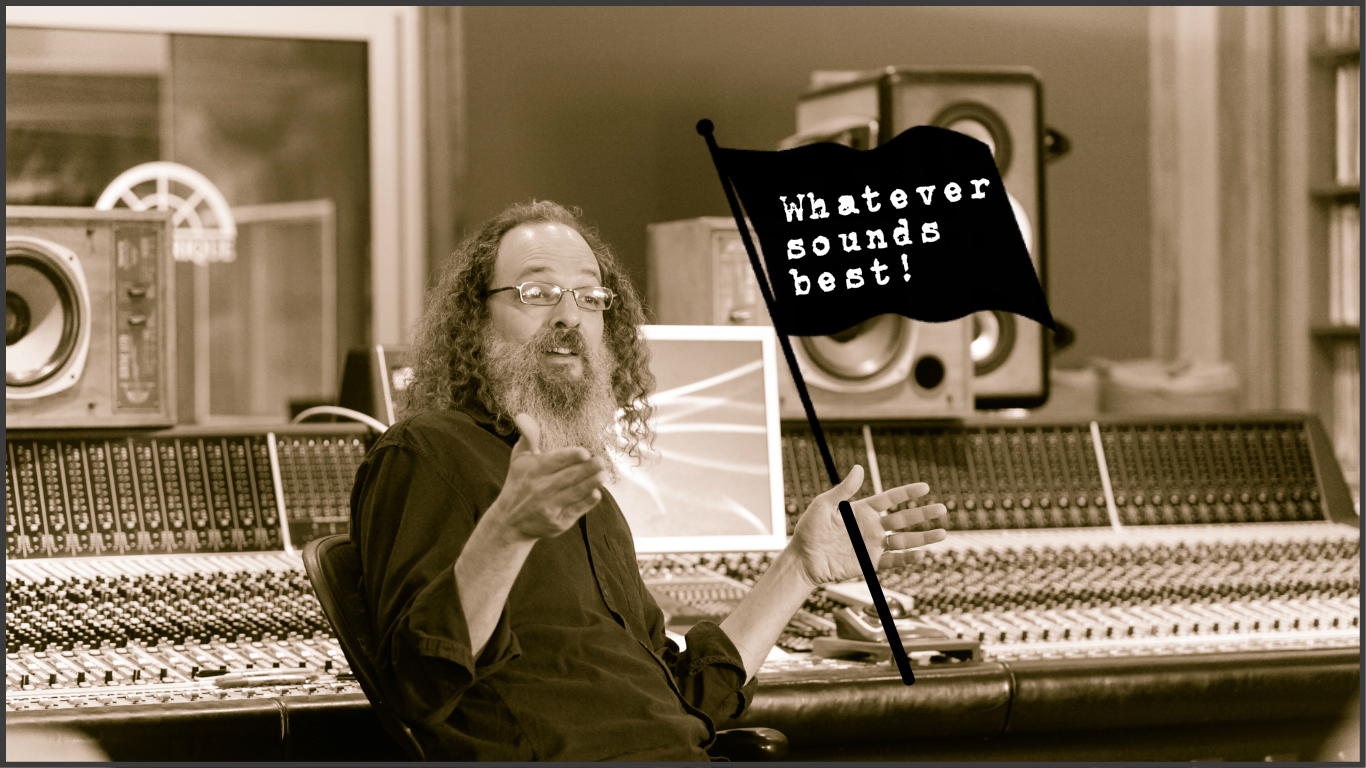
“I am painfully aware of my legacy of quotes referring to mixing using analog equipment. That is how I mixed for years, I was an evangelist for it; as much for the ergonomic, visceral workflow as the sonics. Now I mix in the box. It’s a completely different way of working. I still love mixing and try and make every mix I do super exciting and musical.”
“I wouldn’t be doing it if it weren’t that for me, at this moment, my mixes sound better… When I started to send the mixes to the clients and all I got back were normal mix notes, I knew that this would work.” – Andrew Scheps
Here are a few reasons why arguing over which workflow is “Better” is a HUGE waste of time:
- By simply listening through Andrew’s incredible back-catalog and comparing some of his earlier “Analog-Mixed” work to his later “ITB-Mixed” work, it’s easy to determine that regardless of the tools which were used, he’s able to produce incredible sounding results!
- Are there a few undisputable pros and cons involved in each workflow? Of course there are… But given the fact that there are so many people who are able to pull-off incredible feats of engineering on either medium, why not just do whatever suits YOU best and stop obsessing about what others are doing?!?
- A far superior approach to having a – in my opinion – disadvantaged “one or the other” attitude, would be to simply mix and match the positive elements of each work format and combine them into a “hybrid” workflow that meets all of your specific needs while also allowing for the best sonic results.
- At the end of the day, it’s crucial to remember that the artists who choose to work with you are typically doing so based solely on the quality of what they’ve heard in your work, not the gear you have at your disposal. Even more importantly: %90 of the average listener’s who will be listening to your end-product won’t care either way as long as long as it sounds killer!
NOTE: Check out my Making Digital Sound Analog URM Blog from a few months back for further insight into the “Analog vs. Digital” Argument, as well as some useful tips on making the most of an ITB mixing setup.
2 – Keeping Things Fresh
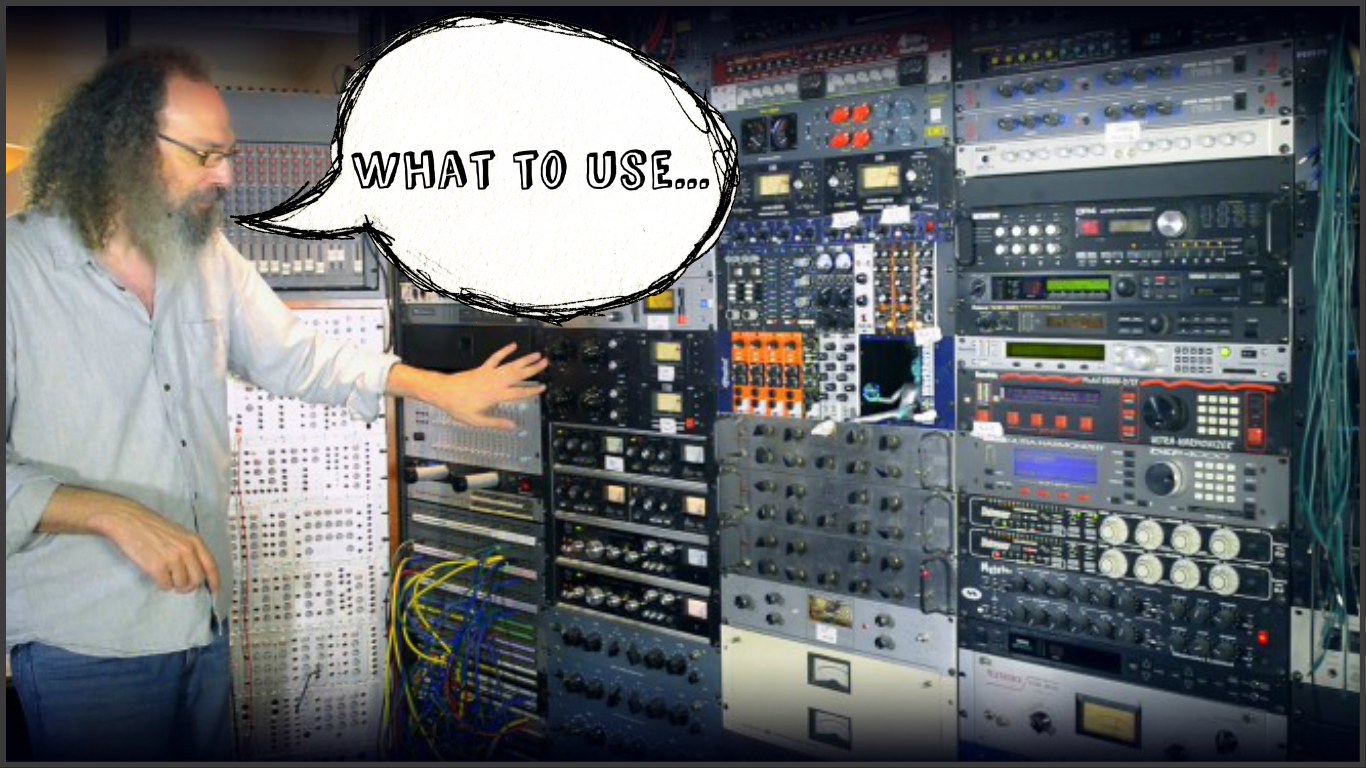
“I’m a big fan of having lots of choices. I don’t like to do the same thing all the time. The way that I set up my mixes, all of my compression is parallel and I’m never directly compressing anything which means all of my compression can be brought in from a template. I have way more compressors set up on a session than I’d ever use so I can just mix and match and try things quickly.”
“On the consoles too, all of my compression is in parallel. It allows me to have different chains on busses and sends, so that I can just hit a button and be like “No, don’t like that *pushes another button* oh, that’s awesome!”. I don’t even necessarily know which one it is that I’ve chosen, but it’s great and inspiring and helps me move on.” – Andrew Scheps
Take some chances, get inspired, forget about “The Formula”:
- A common misconception about a lot of successful engineers is that they use the same exact “secret” methods and signal chains across every single mix they ever do. If you’re the kind of person who spends hours upon hours trawling through interviews and forum posts searching for these “secrets” then I’m sorry to break it you, but… THEY DON’T EXIST!
- The fact that Andrew sets up his workflow in a way that allows for – and encourages – spontaneous experimentation means that he’s never having to conform to a single “route”. Instead, he’s basing all of his decisions on what’s most appropriate for the sound he’s working on at any given moment, and simply doing whatever inspires him the most.
- Although it’s great to develop a list of various “holy-grail” signal chains and settings which you can reach for whenever a song calls for a certain sound, limiting yourself to a standardised “mixing formula” can potentially lead to an eventual loss of inspiration in your everyday mixing process.
- Do you think groundbreaking bands like The Beatles, Def Leppard or Metallica would have been half as successful or influential if they weren’t willing to experiment with sounds in the studio and take some risks in pursuit of their goals? Maybe… But I’m sure glad they were!
NOTE: On a side note, check out my Mixing Secrets – Volume 1: Vocals URM Article from a while back for some great tips & tricks on using parallel compression, as well as some great info on Andrew’s mixing process.
3 – It’s About The Ear, Not The Gear!
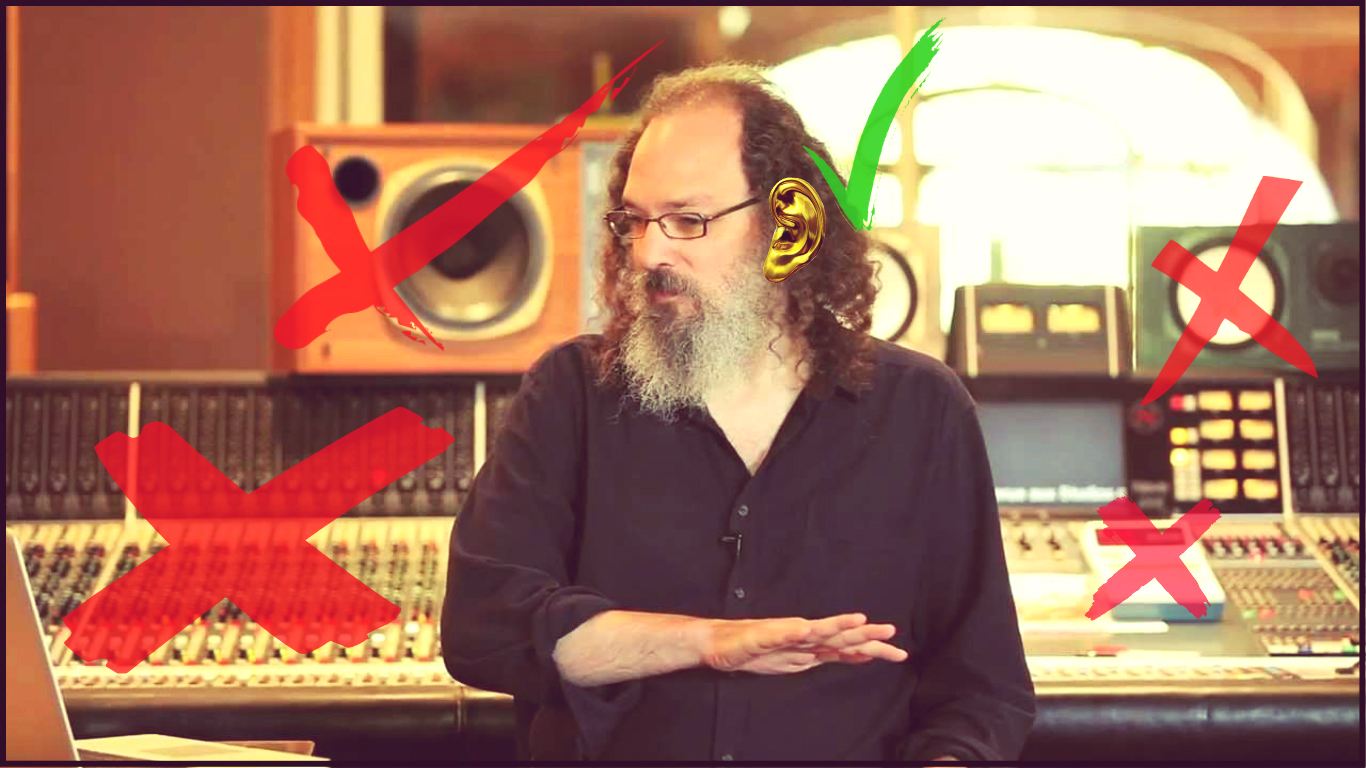
“If you just want to mix, buying gear is a waste of money. I think you’re really setting yourself up to have excuses for why it’s not going well because you don’t own all the gear. I had all the gear, and I still hated most of the stuff I did!”
“It’s about the ability to make the tools do what I want coming out of the speakers, not just the ability to use the tools, which is exactly the mistake a lot of young engineers tend to make.” – Andrew Scheps
Technical knowledge is important, but not a substitute for experience:
- A common mistake which people new to the mixing-game tend to make is over-emphasising the importance of the tools they are using.
- Yes, the quality of the gear and plugins you own IS IMPORTANT, and knowing how to operate those tools to their full potential WILL most definitely help you to get better results out of them. However, the brutal reality when it comes to actually working in the music business, is that nowadays, knowing how to use the gear is more of a prerequisite than an advantage!
- When it comes to choosing which pieces of gear to use while mixing: I can’t tell you how many times I’ve bought an expensive piece of gear or new “ultimate” plugin, only to achieve the exact same quality of mixes, and in certain cases, impact them negatively due to overdoing things…
- The solution? Learn to make things sound great with the basic tools you have on-hand. More often than not, the built-in plugins which come pre-loaded in you DAW are more than capable of producing pro-quality results.
- In our current age of “in-the-box affordability”, not having the money to buy the latest and greatest in audio tech is no longer a valid excuse, so stop blaming the gear and focus on improving your ears!
NOTE: Check out my URM Blog titled Buy Smart! – A Guide To Buying Gear for some important advice on spending studio funds wisely and making the most of your resources.
4 – The Importance of Artistic Integrity
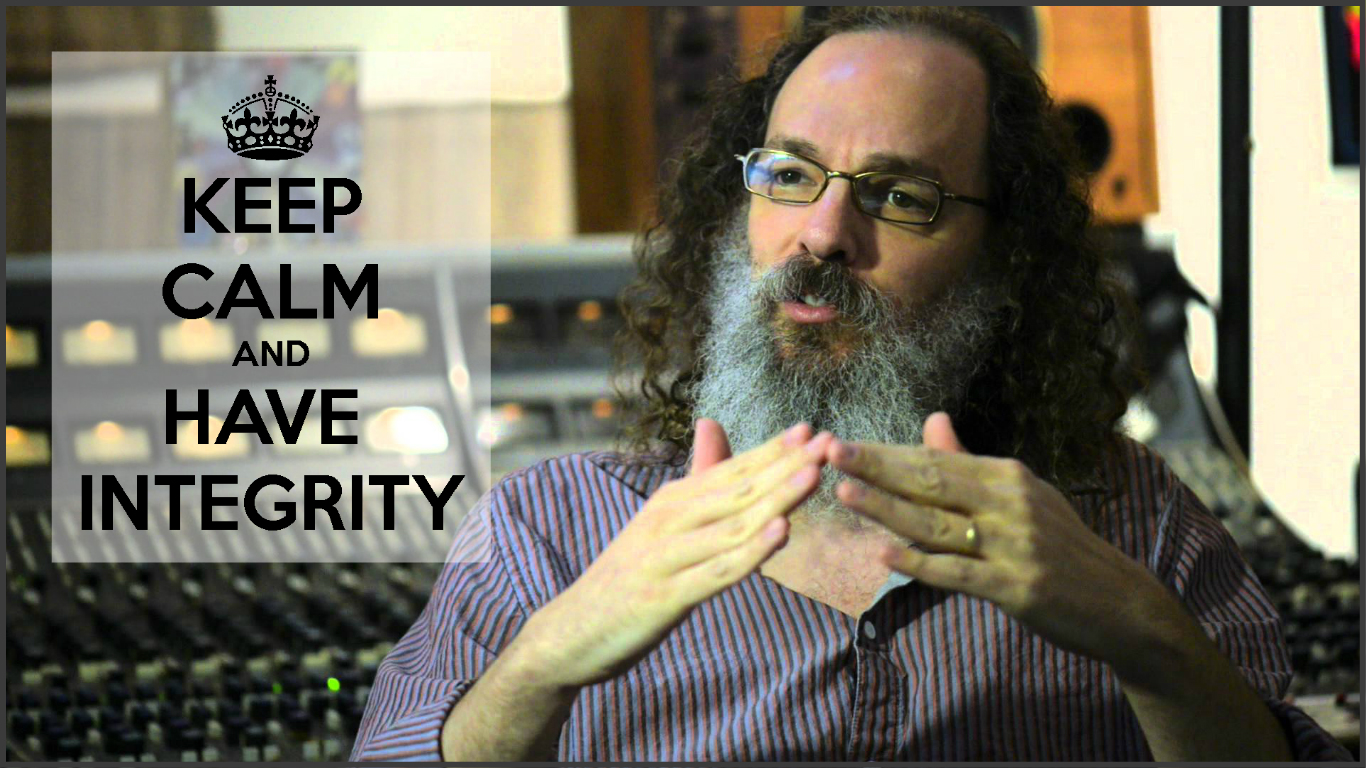
“I think it’s really important in production to realise the two sides of the decision making process: You wanna make something that will sell enough so that everybody involved can make a next record – but at the same time… You need to be true to your own vision artistically. I think that paying any attention to what YOU THINK will sell – in my experience – is a complete waste of time…”
“It would be amazing if I could say “Hey, let’s make this one song a huge hit and make the other songs really artistic!” but you can’t do that, nobody can do that… In terms of making something an actual hit that connects with millions of people and is massive all of a sudden, there’s no way to know! And if you think you know, you’re just being arrogant.”
“I wanna make sure that we’re making the best record that we can make, period. That way, at the end of the process there are no regrets, and there’s nobody who can come back and say “Well it wasn’t a success because we compromised on our songwriting to make it more poppy” or whatever… If the band has decided that they want to be more commercial, and that’s their vision, then that’s the vision that we will follow all the way through, but you can’t do it thinking “if we’ll do that we’ll make a lot of money”. You have to do it because that’s the record you want to make, and you have to buy into it artistically %100.”
“To me the only thing that’s guaranteed to fail is something that doesn’t feel authentic, or something where the listener doesn’t feel like the artist actually means it – Whereas the things that connect the strongest between artist and listener are the things that have artistic integrity. They have to believe it in the moment, and then the listeners will believe it too.” – Andrew Scheps
If you wholeheartedly believe in what you’re doing, chances are others will too…
- Quite honestly, there isn’t much more I can add to the amazing pieces of advice Andrew has thrown our way with the quotes above…
- If anything, I’d say that it’s extremely important not to get boxed in by limitations based on personal taste or “musical identity”. A few examples which instantly come to mind are: “Samples and Synths have no place in real music” or “trying to make music accessible to the mainstream is selling out”.
- Having a set of ideals and standards is important. But if you’re trying to force these ideals down people’s throats, you’re bound to alienate a few people and even cost yourself potential customers in some cases.
- Keeping an open mind in these situations, as well as having the ability to accurately accommodate for any artistic vision your clients may throw your way is hugely important, and will go a long way towards towards making yourself more employable.
NOTE: Want more tips on this subject? Check out last week’s URM Blog Live and Learn – Audio Lessons From Everyday Life
5 – CONCLUSION – Determining When A Mix Is “Done”
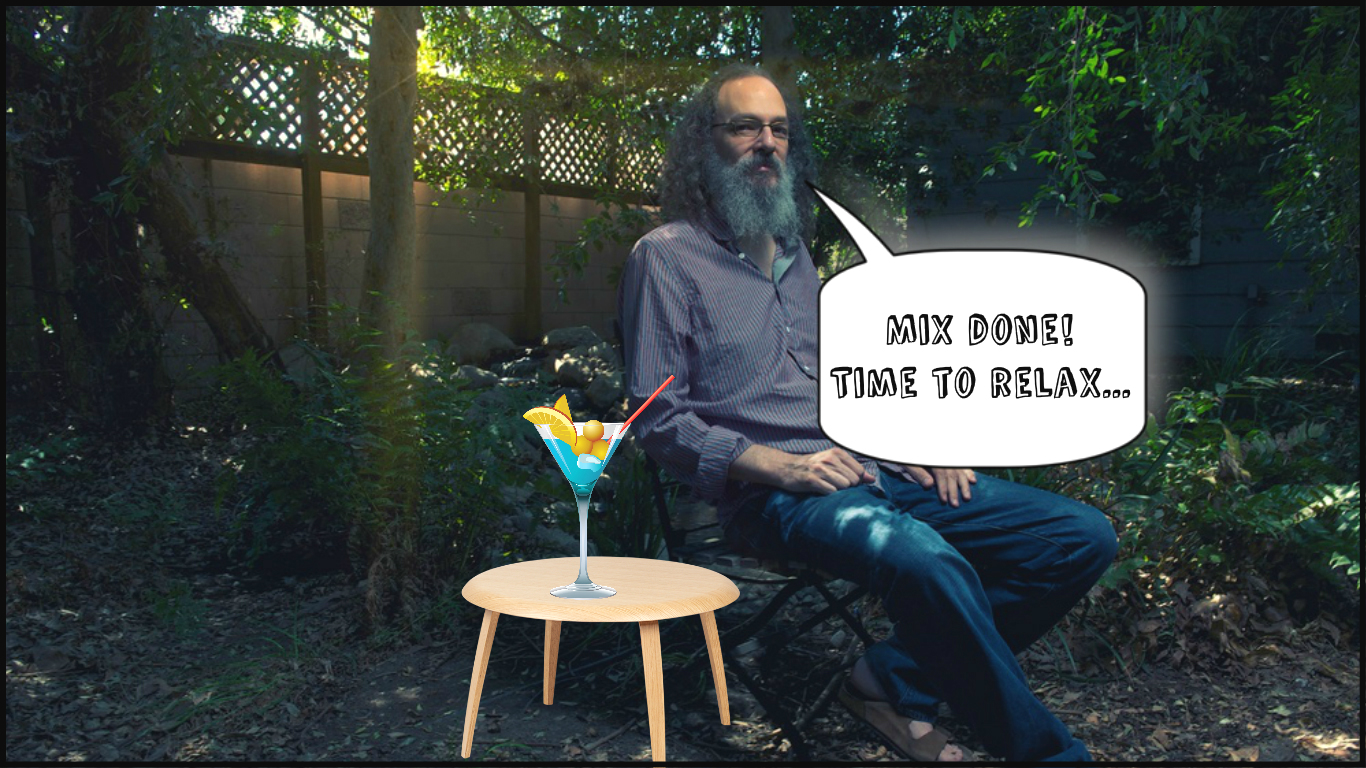
“As I work on a mix, the one thing I want is for it to hit me emotionally. Until it’s doing that, I’m not done. I also build up a mental to-do list, whether it’s building vocal effects in the chorus, making sure the downbeat of the bridge is a big deal, or doing some panning moves – until I’ve ticked off everything on that list, I’m obviously not done… But really, I just want to hit play at the beginning of the song and be engrossed all the way to the end and think it’s awesome and want to hear it again. If I get to that point, then I’m done.”
“There’s no “amount of time” it should take to mix a song. If it’s a simple, or even complicated song that’s really well arranged & produced, and after an hour and a half of mixing you can’t find anything else that’s left to do then fine, just leave it… Listen to it the next day, see if you still feel that way, and print it! Don’t set parameters before you start about anything and don’t presuppose anything. Keep making it sound like what’s in your head until you eventually get it there and you stop.” – Andrew Scheps
Some people just don’t know when to stop…
- The more I study the industry greats who are churning out incredible mixes on a daily basis (such as Andrew Scheps), the more I realise this all-important fact: More often than not, they aren’t necessarily focusing on technical perfection, but rather creating a combination of sounds which help convey the emotional content and intended vision at the core of the track as accurately as possible.
- The truth is, there will always be certain things which can be done to slightly enhance the technical aspect of a mix. The problem comes when you’re continuously chasing for miniscule improvements to the point of jading your perspective of the actual impact you’re having on the final product.
- In my experience, there’s a certain “golden timeframe” in which you can finish a mix and still maintain a realistic “listener’s viewpoint” towards how it sounds and makes you feel. This is also the most important period in which It’s entirely possible to make and fulfill %95 of the crucial mix-related decisions that really matter!
- If – as Andrew stated above – you’re able to get to a point where you’re happy with a mix within a few hours of said timeframe, then it’s important to weigh up how beneficial it actually is to spend countless more hours agonising over that last %5 which %99 of listener’s won’t even notice, as you may also end-up risking the loss of that initial perspective entirely…
My final piece of advice on this topic:
As is the case with a lot of things in engineering, being able to judge the quality of a mix on more than just a technical level takes a lot of time and experience. The only way to reach that point? Mix often and learn to finish things – No matter how bad the results may be when you’re starting out!
As you begin to build a repertoire of mixes, gain feedback from your clients/peers, and learn from your mistakes with each one you complete, your ability to judge what’s most important towards producing good mix will improve, and in return, allow you to finish things within the “golden timeframe”.
Final Words:
This concludes “Learn From The Legends – Volume 4: Andrew Scheps.” I hope that this article has given you some new ideas to try out during your next project. Be sure to comment below if any of this information has helped you out, or if you have any questions.
Stay tuned for more production/mixing related articles in the not-so-distant future!
Thomas Brett is a producer, mixing engineer and songwriter at Brett Brothers recording studio in the UK. Check out the Brett Brothers studio website for more information and articles on all things mixing www.brettbrothersstudio.com
Read Learn From The Legends – Volume 1: Chris Lord-Alge here!
Read Learn From The Legends – Volume 2: Randy Staub here!
Read Learn From The Legends – Volume 3: Andy Wallace here!
Want mix tips from Thomas Brett? Read them here!
 Nail The Mix is our online mixing school that gives you REAL multi-tracks from REAL bands, plus a mixing class from the producer who recorded it. Past guests include Periphery, Chelsea Grin, Machine Head and State Champs. Join now for instant access!
Nail The Mix is our online mixing school that gives you REAL multi-tracks from REAL bands, plus a mixing class from the producer who recorded it. Past guests include Periphery, Chelsea Grin, Machine Head and State Champs. Join now for instant access!

2 thoughts on “Learn From The Legends – Volume 4: Andrew Scheps”